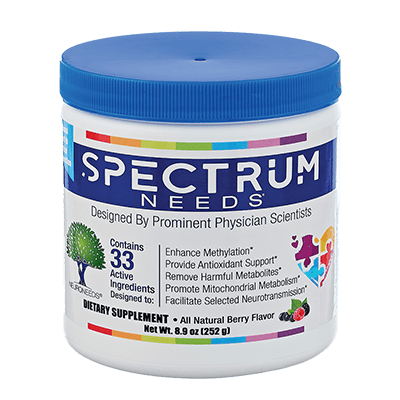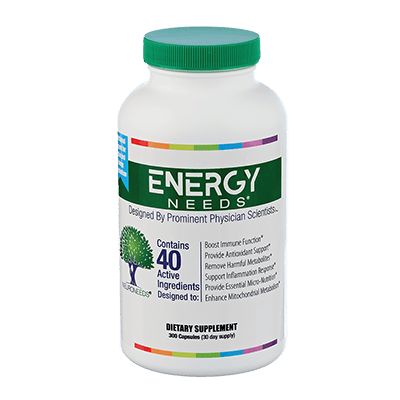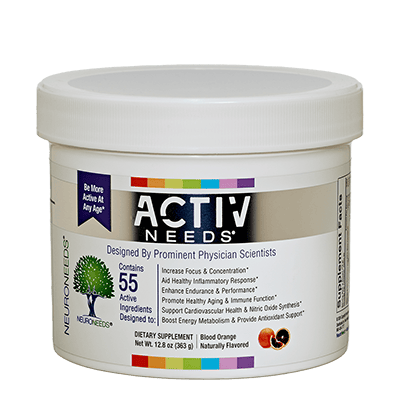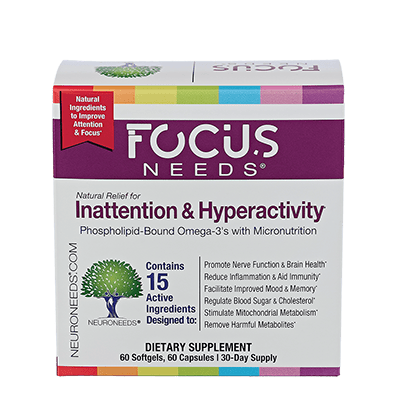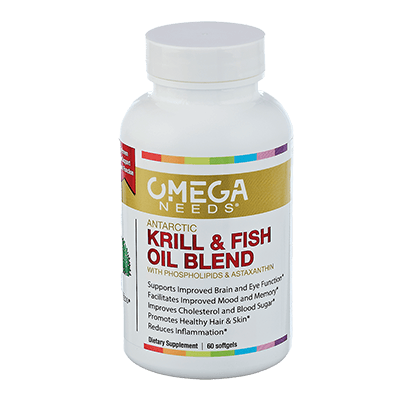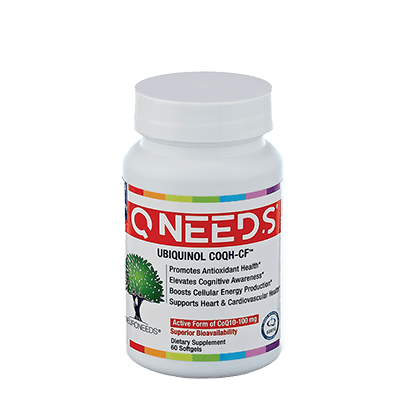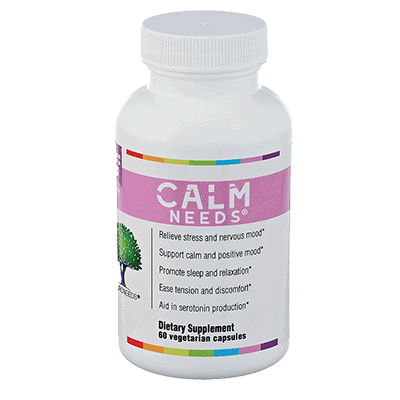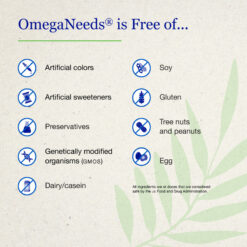$84
OMEGA 3 FATTY ACIDS IN OMEGANEEDS®
The Details
What Are Omega-3 Fatty Acids? Omega-3s are critical for life, including for the proper function of brain and heart. Humans cannot make omega-3s and they must come from the diet. However, while historical diets were often loaded in these essential nutrients, most modern diets are quite low.
Humans and other animal species need several different fatty acids of different chain lengths and saturation levels (number of double bounds). Double bonds can add kinks (bends) to the fatty acid and provide substantial changes to their properties. Humans have very limited abilities to add double bonds to fatty acids. Thus, there are many fatty acids that are essential for life that humans cannot make that we need to obtain from our diet. As other animals cannot make these unsaturated fatty acids either, we obtain them from plants in our diet (e.g., vegetables), or from certain animals that themselves obtain them from plants or algae.
Some highly unsaturated fatty acids (containing multiple double bonds) are very important in health. Many of these are called omega-3 fatty acids. Omega is the last letter of the Greek alphabet, and in fatty acid designation, “omega” refers to the last carbon in the chain (the end opposite the acid group). A double bond three carbons from the far end of the chain is referred to in speaking as “omega three” and in writing as “omega-3”. Two common and important omega-3 fatty acids are docosahexaenoic acid (DHA) and eicosapentaenoic acid (EPA). These fatty acids are critical for membrane fluidity and other properties.
DHA is the most abundant polyunsaturated (two or more double bonds) fatty acid in the brain. Most brain DHA is esterified (a type of chemical bond) to phospholipids, predominately as phosphatidylcholine (PC), phosphatidylserine (PS), or phosphatidylethanolamine (PE). DHA is located throughout the brain, with relatively higher concentrations in gray matter and especially at synapses.
Eicosapentaenoic acid (EPA) is present in brain only at very low levels. However, EPA is converted into DHA in the brain.
The main sources for EPA and DHA are from algae, either directly or indirectly. Western diets usually are low in algae. Since algae is the main base of the oceanic food chain, seafood is high in omega-3 fatty acids from algae. Cold-water oceanic foods are particularly rich in omega-3 fatty acids, which become increasingly concentrated in organisms the further they are up the food chain. Some fishes can also source omega-3s from their own gut flora. Thus, the main dietary source of omega-3s in most Western populations is from seafood. However, seafood can be contaminated by mercury and other heavy metals, in which concentrations also accumulate up the food chain. Additionally, seafood is expensive, not available everywhere, not preferred by many people, and has sustainability issues of massive fishing on natural marine populations. For these reasons, seafood-derived oils, either from small oily fishes (e.g., sardines, anchovies) or crustaceans (usually krill), is preferred. Good sources are high in omega-3 fatty acids, very low in mercury and other heavy metals, and sustainably fished. One such source is OmegaNeeds®.
What Do Omega-3 Fatty Acids Do? DHA has many beneficial effects on health, and is essential for brain development, learning, and vision. DHA levels in the brain rapidly increase around the time of birth and in the first two years thereafter. DHA is involved in numerous processes in the brain, including the maintenance of membrane fluidity, neuronal survival, synaptic neurotransmission, and neuroinflammation. Thus, it is not surprising that disturbances in brain DHA metabolism have been implicated in multiple neurological disorders, including those considered to be neurodegenerative and psychiatric. Among these disorders are autism, ADHD, bipolar disorder, depression, epilepsy, Alzheimer, Parkinson disease, and cerebral ischemia (from stroke, heart attack, drowning, etc.). A potential role of DHA in the prevention of these and other neurological disorders has been advocated. In rats with cerebral ischemia, DHA improves neurological functions and decreases the degree of brain damage visible by microscopy [PMID: 19542051].
EPA is becoming increasingly recognized as important for brain in health and disease. The use of EPA is less studied than that of DHA in various neurological conditions. “Although DHA appears more effective for neuroinflammatory conditions, EPA is more beneficial for depression” [PMID: 30530735]. Most studies have used the two together, and they naturally occur together in products derived from both fish and krill oil.
What Does an Omega-3 Fatty Acids Deficiency Appear As? Omega-3 fatty acids are required for life. Deficiency has been associated with many problems, including fatigue, insomnia, depression, anxiety, poor concentration, skin irritation and dryness, dry eyes, brittle hair and nails, joint pain and stiffness, prolonged heavy periods, and excessive ear wax.
What About Omega-3 Fatty Acids’ Use in Disease? Omega-3 fatty acids have been shown in studies to be helpful in people with multiple disorders of the brain, including autism, ADHD, migraine, depression, anxiety, chronic pain, and dementia.
Omega-3 fatty acids have been shown in studies to be helpful in people with multiple disorders of the heart and blood vessels, including reduction of blood pressure, lipid (cholesterol, triglyceride) levels, and/or weight, and protection against cardiovascular disease (heart attack).
Furthermore, omega-3 fatty acids have been shown in studies to be helpful with inflammation, autoimmune disease, diabetes/blood sugar, macular degeneration (age-related blindness), and in many other conditions, see the list below.
Selected studies and reviews demonstrating relationships between omega-3 fatty acids in various conditions (Library of Congress PMID listings shown):
ADHD 11817499, 14669965, 17435458, 21807480, 21961774, 26966583, 27555775 28741625, 29207548, 32759851
Anxiety 21784145, 30646157, 34959972
Autism 11487301, 16920077, 18072818, 22370992, 24839884, 28218722, 29490101, 30744880, 32759851
Autoimmune disease 12480795, 15290734 (lupus), 15723739 (RA), 26362904 (MS)
Cardiovascular disease/blood lipids 11997274, 18774613, 19487105, 22113870, 22180524, 22317966, 25458786
Depression/bipolar 12888186, 15907142 (multiple psychiatric disorders), 17685742, 18247193, 21721919, 22910528, 24757497, 26188642
Dementia 19262590, 19523795, 25592004, 28466678
Diabetes (especially autoimmune-related) 14668274, 25329601, 30684965
Inflammation 12480795, 20727522, 21784145, 24505395
Macular degeneration 24557349, 34749130, 34829613
Metabolic syndrome 19593941, 20727522, 23456976
Pain 7588501, 8623866, 24049587, 28495596
Skin disorders 20620762, 21760742, 34681353
Sleep disorders 21897776, 24605819, 24812543
The above papers constituent only a small number of the vast number of studies that have been published on omega-3 fatty acids in health. Not all studies have shown a benefit. Nutrients are used frequently by others in the treatment of a variety of conditions, and inclusion herein does NOT reflect a recommendation or endorsement for treatment of that condition, but simply demonstrates that at least one medical/scientific paper found potential benefit. Please consult your physician and/or seek additional sources as appropriate.
What Are the Common and/or Important Side Effects of Omega-3 Fatty Acids? Side effects are rare at the usual doses used in supplementation. The American Heart Association (AHA) states that taking up to 3,000 mg of fish oil daily in supplement form is considered safe. At recommend adult dosing, OmegaNeeds® contains 1,000 mg of total oil, and is thus well under this limit. The maximum tolerated amount of krill oil is less clear, but most sites advocate taking between 250-500 mg a day, and OmegaNeeds® averages at 400 mg, which is within the recommend range. Do not take more than the amount on our label unless you discuss it with your doctor first.
Side effects with fish and krill oils are rare and generally mild; here are some of the potential issues that might arise. This is not a complete list.
- Fishy taste/aftertaste.
- GI effects, including nausea, diarrhea, and/or reflux (GERD). For this reason, it is advisable to take this product with meals, at least at first.
- Occasional fever, chills, body aches, pain, skin rash.
- Increased bleeding, including nose bleeds, and decreased blood clotting. For this reason, some surgeons recommend stopping the product before surgery.
- Complicated potential effects on blood sugar, so care should be taken in certain individuals with problematic high or low blood sugar.
- Complicated potential effects on blood pressure, so care should be taken in certain individuals with problematic high or low blood pressure.
- Interactions with medications, especially some used for blood pressure or blood sugar control, immunosuppression (cyclosporine, sirolimus, tacrolimus), blood clotting (Coumadin), and chemotherapy (platinum agents).
- Allergic reactions to fish or seafood (krill). For this reason, this product may not be indicated for those with seafood allergies.
.
Is There Any Laboratory Testing for an Omega-3 Fatty Acid Deficiency? Specialized laboratory testing can determine the levels of omega-3 fatty acids in blood.
Order OmegaNeeds® Today
Formulations

